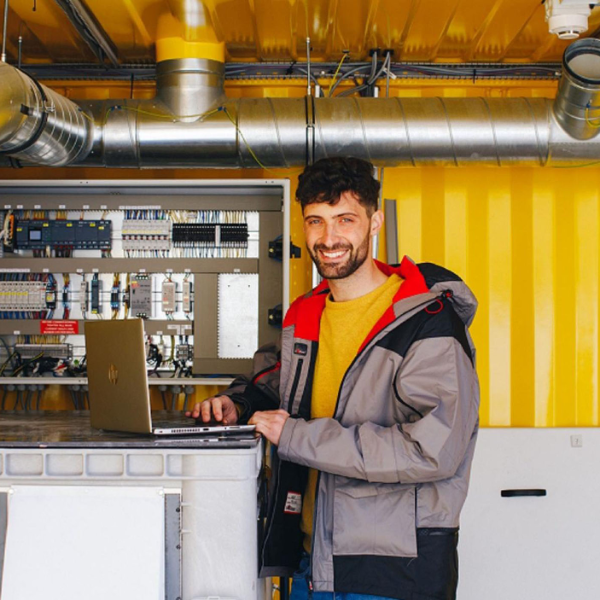FleXtore II: testing a new form of energy storage
A hydrogen bromide flow battery for dealing with fluctuations in energy supply and pricing

FleXtore II: testing a new form of energy storage
A new form of energy storage is being tested in the FleXtore II project. We need energy storage to be able to use all the renewable energy generated by solar panels or wind turbines, among others. This hydrogen bromide flow battery can also serve to absorb peaks and troughs in the energy supply and price. Situated in Arnhem, the FleXtore II pilot plant is controlled remotely.
Renewable energy is not generated throughout the day. Energy storage lets us store energy from wind or sun. This is important in being able to supply energy at all times, even when the sun is not shining and the wind is not blowing.
This hydrogen bromide flow battery means energy can also be stored when there’s plenty of it and it’s therefore cheap. The energy can then be fed back into the grid once energy becomes scarce and more expensive once again. Not only does this have a financial underpinning, but it can also contribute to balancing the energy grid and thus contributing to the energy transition. The project also aims to investigate the scalability of such a storage system, and to test related energy and control systems.
Low storage costs
What’s special about this battery is its potential to enable very low storage costs per kWh after further development. Costs might well be two to three times lower than those of conventional technologies. This is important for the system’s economic viability. The energy transition will need an enormous amount of storage capacity, but that’s only possible if the technology also offers economic advantages.
The low storage costs are achieved through a combination of factors: the choice of the flow battery concept, the choice of hydrogen and bromide as active materials, and finally the patented design by battery builder Elestor, one of the project consortium’s parties.
FleXstore I
The project is a sequel to the successful FleXtore I pilot, conducted in Deventer with an earlier version of the hydrogen bromide flow battery. This test setup was connected to the solar panels at the Witteveen+Bos head offices in Deventer at the time. Alongside Elestor and Witteveen+Bos, the project consortium also comprises Off Grid Test Center, Energiepioniers Noordoostpolder, the Municipality of Noordoostpolder, TNO (the Netherlands Organisation for Applied Scientific Research) and the HAN University of Applied Sciences.
Witteveen+Bos is responsible for project management within the consortium. We also take care of the required environmental permit for the tests, and lead the technical risk sessions on the battery’s design. We also conduct analyses, among other things on the battery’s durability. The FleXtore II pilot plant is situated in Arnhem and is fed remotely, among other things from solar panels at the Emmeloord municipal shipyard.
More Information?
